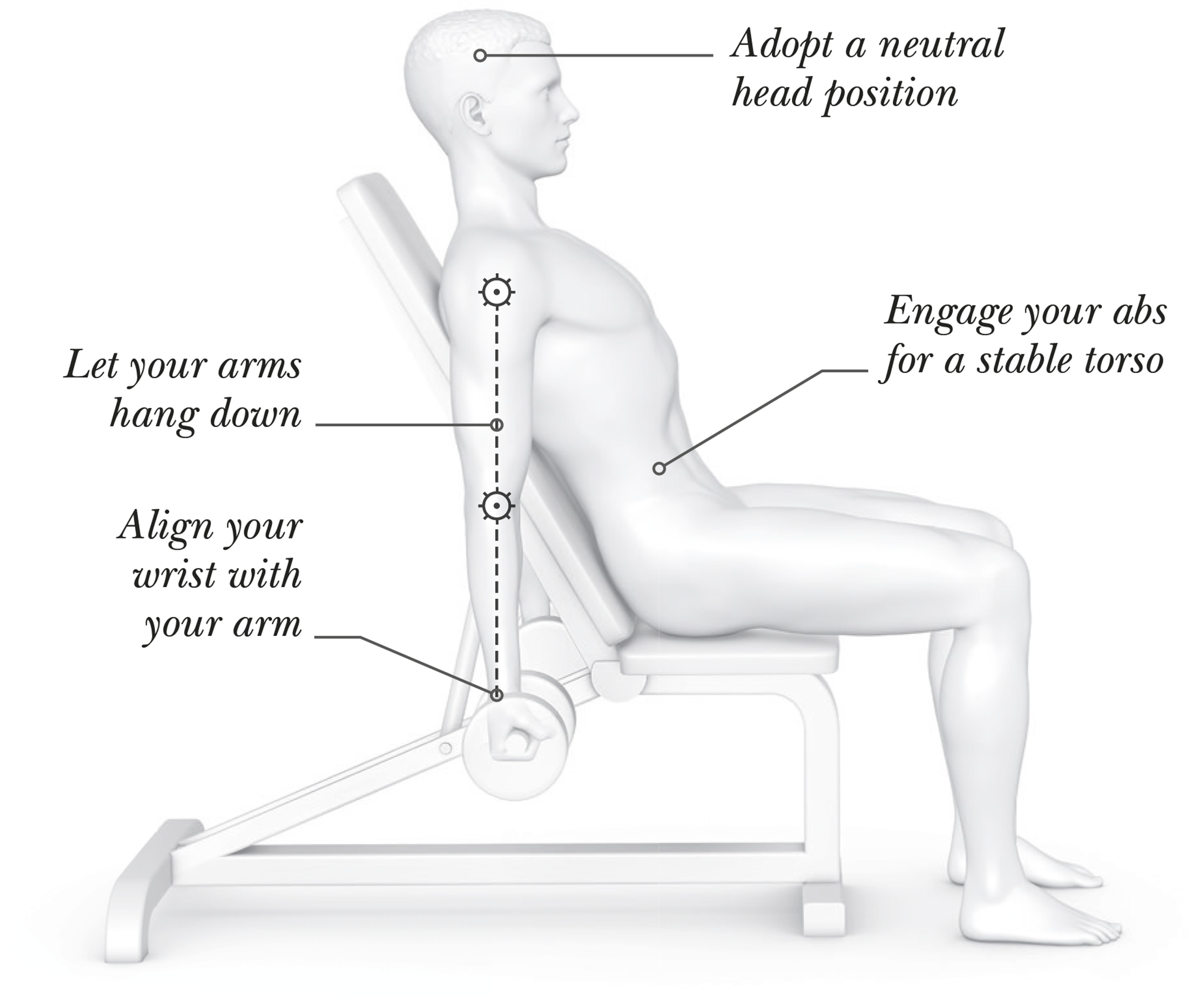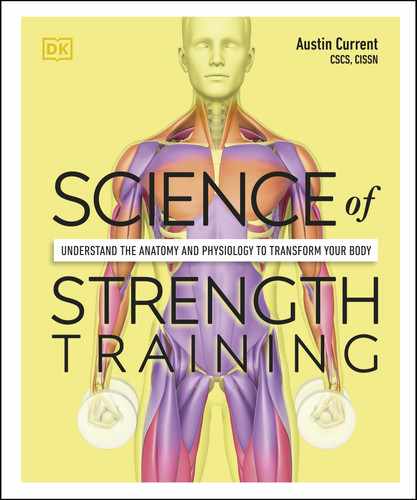dumbbell biceps curl
This seated exercise safely trains the biceps while also challenging other elbow-flexor muscles. The use of dumbbells over a barbell allows for better adaptation to your individual mechanics; you can also use cables or resistance bands.
the big picture
The classic biceps curl involves lifting and lowering a weight while hinging at the elbow. Working seated on an incline bench or a chair with an adjustable back support rather than standing allows a greater range of movement and more muscle isolation. If you experience discomfort at the wrist, elbow, or shoulder, try switching to the cable or resistance-band variations (overleaf).
Beginners can start with 4 sets of 8–10 reps; discover other variations on and other targeted sets in the training programs.
PREPARATORY STAGE
Sit on an incline bench with your back on the seat pad and your feet flat on the floor, shoulder-width apart. Grasp the dumbbells using an overhand standard grip and let your arms hang. Your wrist position will match the angle of your upper arm.

n Double-tap image to read the labels
stage one
Take a breath in and engage your abs to help stabilize your core. Breathe out as you flex at the elbows and curl the dumbbells up toward your shoulders, keeping your shoulders still. Your feet should remain flat on the floor without any movement in your hips or torso.

n Double-tap image to read the labels
ANTERIOR-LATERAL VIEW
Upper body
Muscles of the torso and back assist the upper body in creating stability here. Maintain tension in your upper-back muscles to hold a neutral head position and keep your shoulders back. Engage your abs throughout to keep your back in contact with the bench.
Arms
This arm curl trains the biceps muscle in its role of elbow flexion. Maintain a consistent shoulder position and focus on flexing and extending at the elbow. Think of driving your forearm into your biceps at the top as you curl up. This exercise helps build muscle and strength in the biceps, which carries over into helping other strength training exercises.
stage two
While keeping tension in your core and your elbows still, breathe in to return the dumbbells to the starting position, resisting the weight with your biceps. Reset your breathing and repeat stages 1 and 2.

n Double-tap image to read the labels
![]() Common mistakes
Common mistakes
Instability in the shoulder, hips, or lower back can create momentum and allow other muscles, such as the front deltoid, to help move the dumbbells instead, so stabilizing muscles is key. Rather than starting with a heavy weight, go light until you’ve mastered the mechanics of the move, then increase incrementally.
